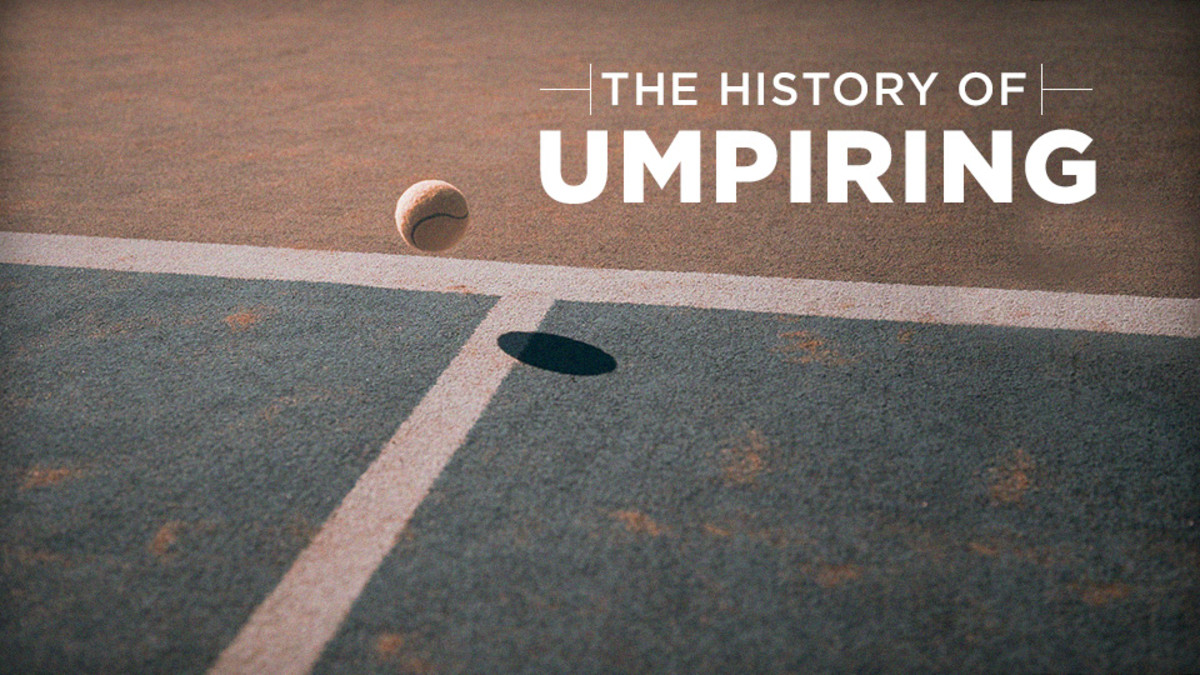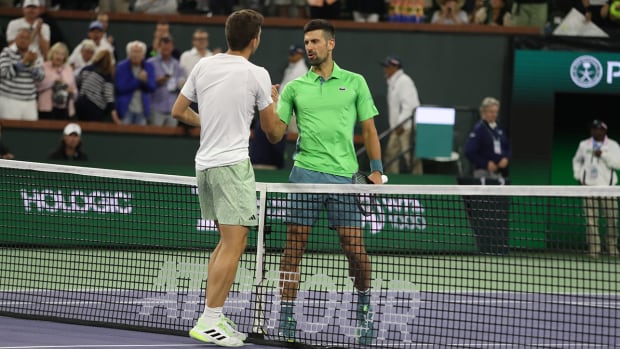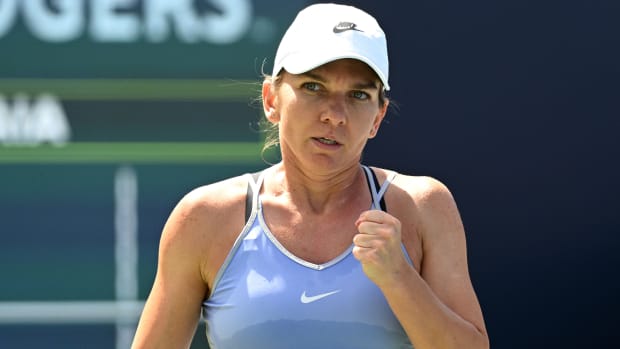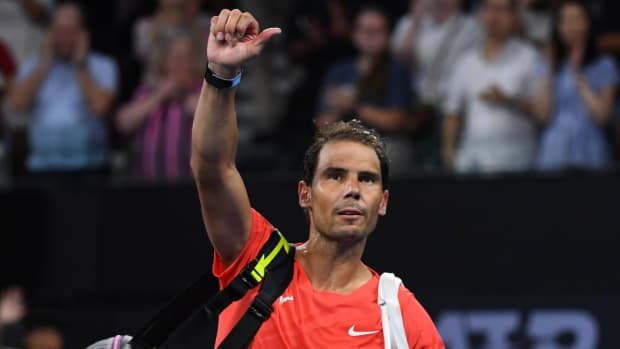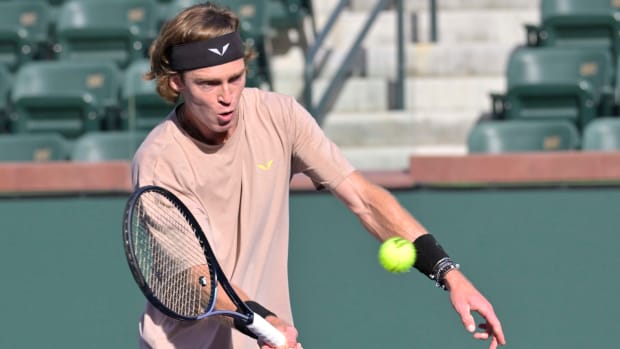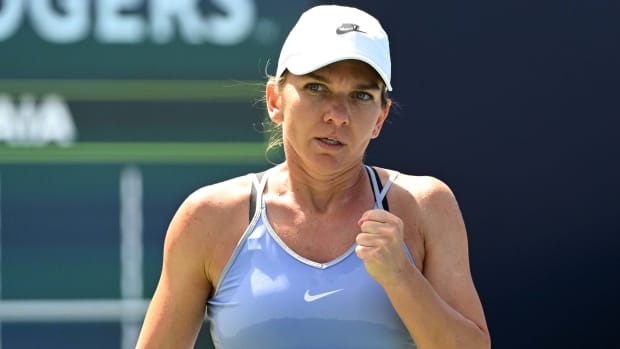The history of tennis umpiring: How Hawk-Eye changed the game
This story is one segment of a four-part series on SI Tennis that will look back in history and chronicle the changes and progression of fundamental aspects of the game, from sneakers to rackets and more.
On Sept. 8, 2004 in a 2–6, 6–4, 6–4 quarterfinal loss to Jennifer Capriati, Serena Williams was the victim of four obviously blown calls—some by line judges and others by the chair umpire, including one of the most audacious overrules in tennis history on a ball well inside the line. And that was just in the decisive third set.
“Hawk-Eye please," commentator John McEnroe said at one point during the match. "This is getting ridiculous.”
The match sparked discussion about the sport's need for some kind of instant replay or advanced line-calling technology—something only broadcasters, like McEnroe, were using at the time—and ultimately marked a change in the way tennis was umpired.
Luke Aggas, director of tennis for U.K.-based Hawk-Eye Innovations, says that in the early 2000s, television stations—from BBC to ESPN—adopted Hawk-Eye as the technology began to improve. But coupled with a handful of big moments in the sports—none bigger than the Capriati–Williams match, he says—the history of tennis umpiring changed forever.
[youtube=https://www.youtube.com/watch?v=F4mGqwA7cCM]
What would turn out to be tennis’ favorite technology was originally intended for cricket, as founder Paul Hawkins played the sport and created the technology as a broadcast aid. It soon carried over to tennis, where broadcasters signed on. As television viewers witnessed the accuracy of the technology, tennis tournaments and even the International Tennis Federation (ITF) couldn’t ignore the obvious benefits. After the September 2004 U.S. Open fiasco, Hawk-Eye got its break. Testing started in 2005, including within Arthur Ashe Stadium, and by late 2005, the ITF had worked with Hawk-Eye, the ATP and USTA to develop and sign-off on the system, passing all the needed criteria in October 2005.
Hawk-Eye technology detects the trajectory of a tennis ball as it bounces off the court by compiling images provided by 10 high-speed video cameras strategically placed at various different points around the court. It first made an appearance at the Royal Albert Hall Champions-level tournament in late 2005 before it was used during Hopman Cup in January 2006. Hawk-Eye hit tour level for the first time in Miami in April 2006 in what was then known as the NASDAQ-100 Open. “That led into the involvement in the whole U.S. Open Series and the U.S. Open that given year,” Aggas says.
Hawk-Eye was used in close to 10 events in 2006, including the U.S. Open. Now the company handles about 95 annually, including three of the Grand Slam events. (The French Open does not use the system.)
As the only ITF-approved line-calling system, Aggas says Hawk-Eye has continued to improve its technology on a “week-by-week, almost day-by-day basis.”
“Obviously 10 years on from when we started, camera technology is that much better,” he says. “That allows us to improve accuracy and reliability.”
To ensure Hawk-Eye works 14 hours a day on Arthur Ashe for 14 straight days, for example, Aggas says they use enough redundancy in the system with 10 cameras so “if a camera powers down or gets blocked or bashed by a spectator, it is still operational.”
An unexpected byproduct of Hawk-Eye has been entertainment. It takes somewhere between five and 10 seconds for a Hawk-Eye review—triggered by a player’s challenge, which only heightens the intrigue—to appear on in-stadium video boards, allowing fans, players and officials to all get the ruling at the exact same moment.
“Sometimes you get the largest cheers of the match (waiting for a ruling),” Aggas says. “There is that compromise between generating the answer straight away and the entertainment the system provides.”
ELC Ultra-Motion - ATP World Tour Finals 2014 from Hawk-Eye Innovations on Vimeo.
The Hawk-Eye technology can give the system operators an answer within half a second, Aggas says. But from there they have an independent certified chair umpire sitting in the both to verify the correct data. Add in the need to cut the video to stop at the right time and send the footage to the in-stadium board and you get at least five seconds of crowd enthusiasm as they wait for the call.
While players hang on the call with anticipation, so do officials. “In the early days the chair umpires and line judges were nervous they were going to be shown up,” Aggas says. “Very consistently over the course of a season, the players are correct 30% of the time. That is 70% the umpire or line judge got it correct and proves they have done a pretty good job.”
Aggas says it took some time, but Hawk-Eye is now seen as another tool to improve officiating within the sport, even from the umpires. “We are all trying to achieve the same thing,” he says. “They are interested in seeing how it evolves.”
There isn’t any official records kept, Aggas says, but using Hawk-Eye data can prove how well the top-flight chair umpires see the ball compared to others.
Before Hawk-Eye
The world of tennis umpiring saw its first dramatic change roughly 30 years ago when tennis officials first developed a Code of Conduct and, according to the ITF, the organization standardized the application of the game’s rules.
By 1999, the ITF, ATP and WTA created a joint certification program, the first time in the history of tennis officiating that one certification was recognized by all three organizations.
Since then the ITF has developed a global program to improve officiating at every level, starting with four levels of certification. Officials start at the National Level and then after they have gone through that education they can aim for a Green Badge, known as Level 1. A White Badge signifies Level 2. The Level 3 school includes three rankings for international chair umpires: bronze, silver and gold, with less than 30 total current Gold Badge holders.
For the last decade those Gold Badge umpires have an extra tool in Hawk-Eye. For that you can thank Sept. 8, 2004.
Tim Newcomb covers stadiums, sneakers and training for Sports Illustrated. Follow him on Twitter at @tdnewcomb.
